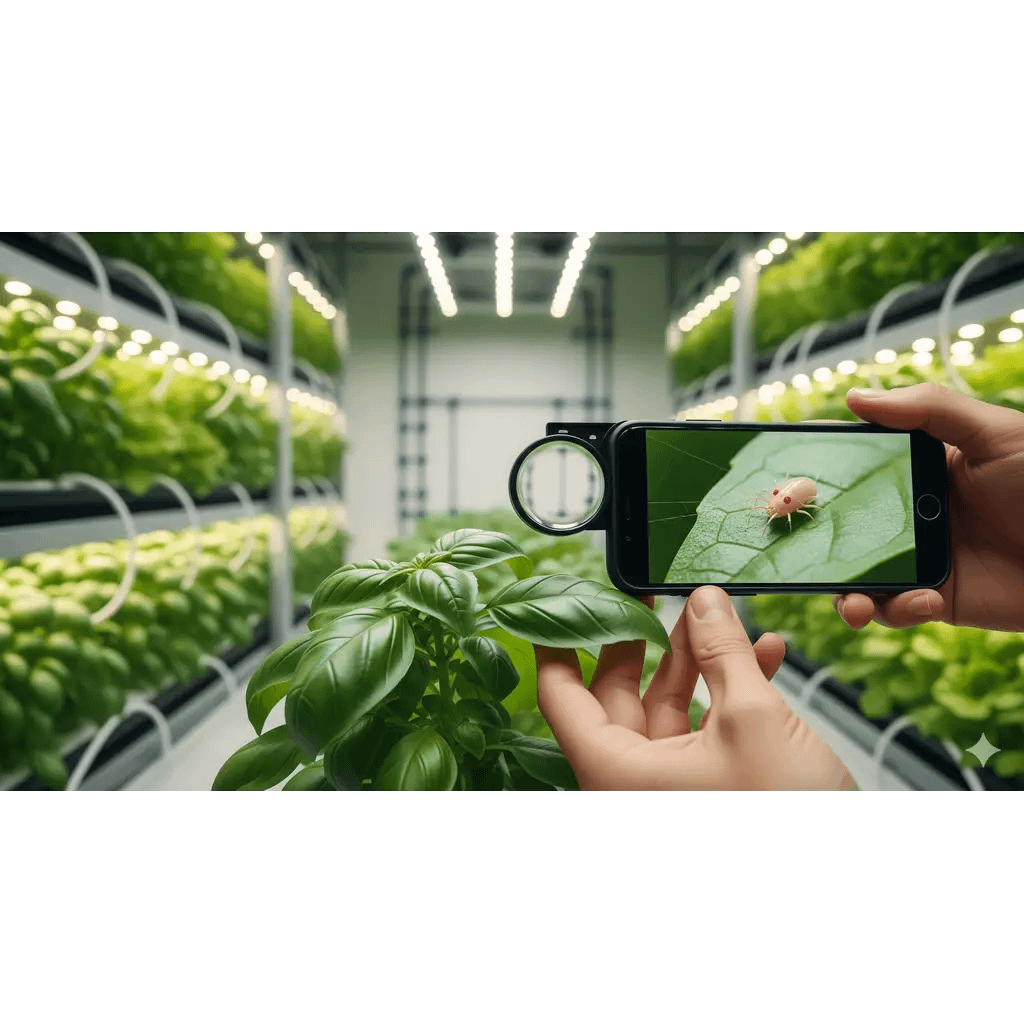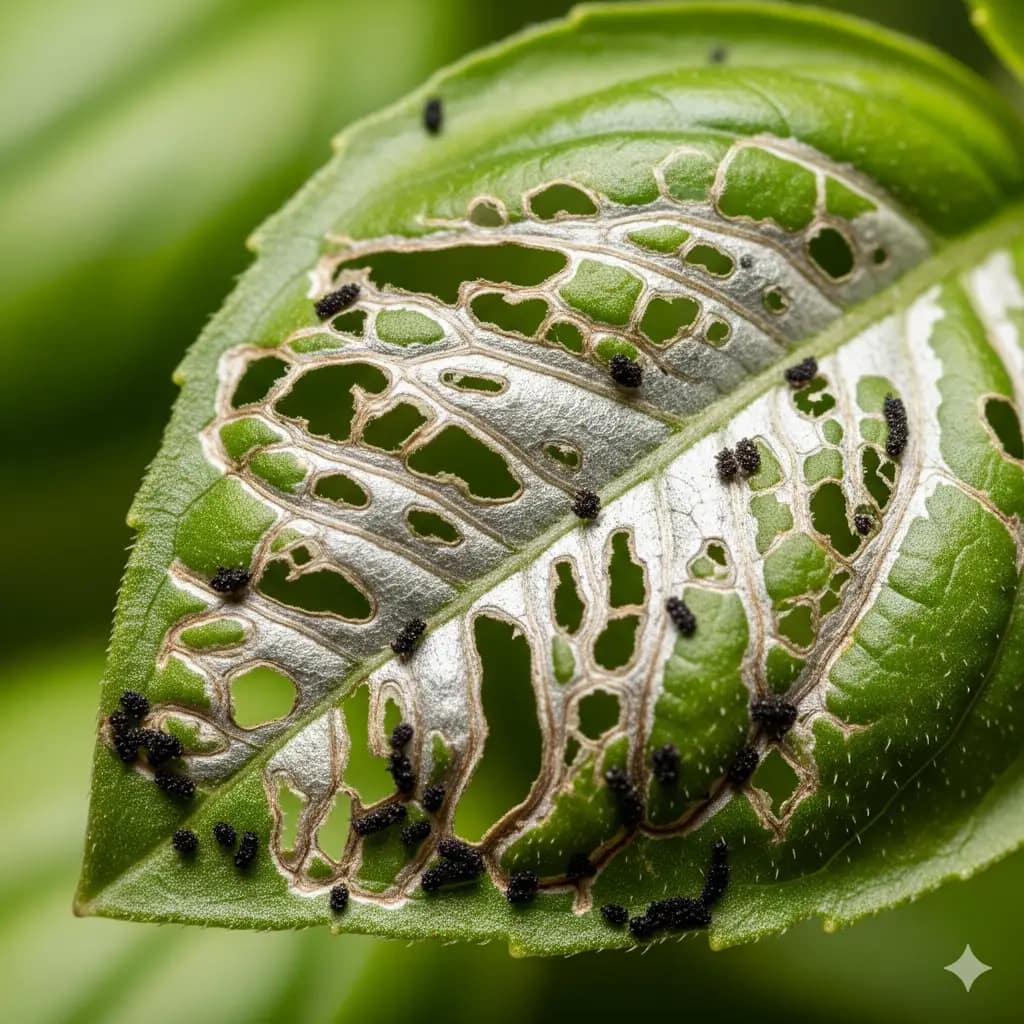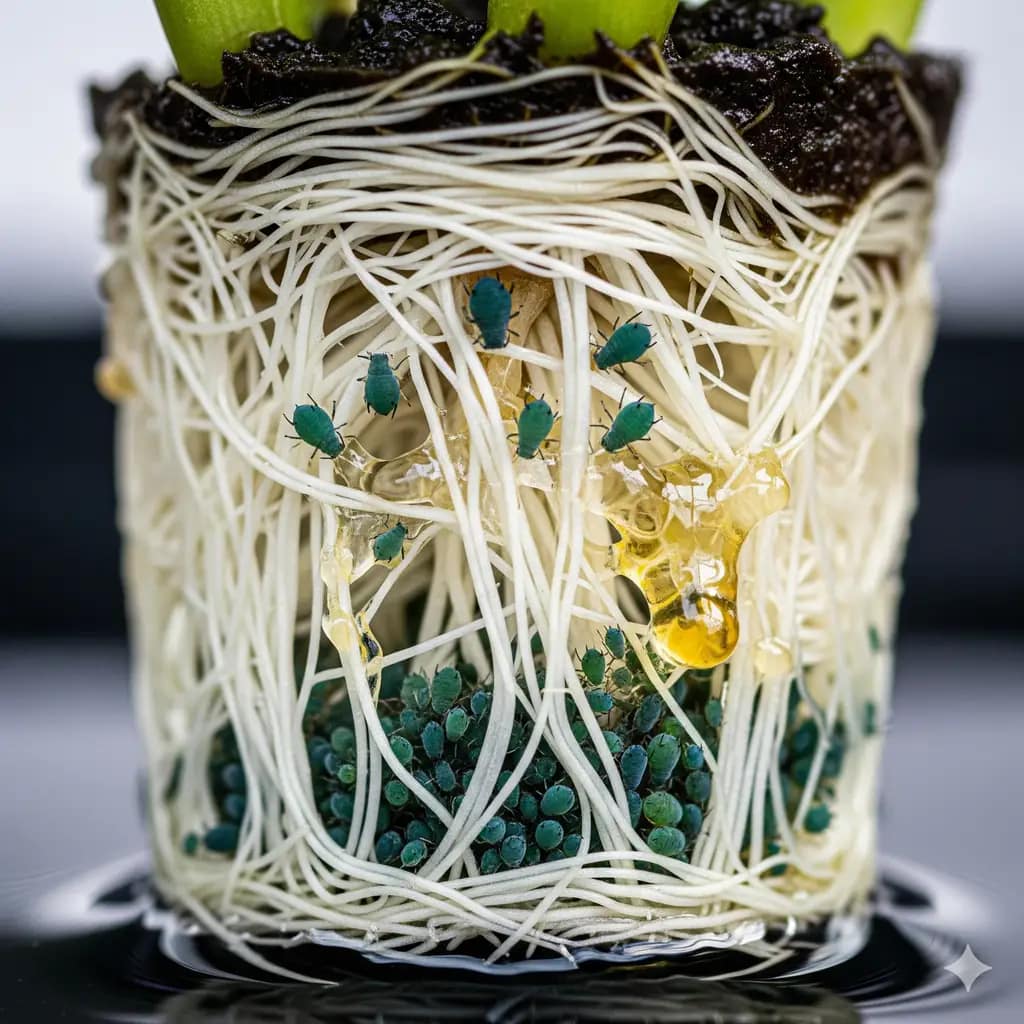The year 2023 was my personal pest apocalypse. What started as a few unassuming silvery streaks on some basil leaves quickly escalated into a full-scale war. I dismissed them at first. A new grower’s rookie mistake, a fatal assumption that I’d see the “bad bugs” before they saw my crop. One week later, the basil was a ghost town, my peppers were covered in what felt like cursed cotton candy, and a microscopic army of spider mites was in full, generational warfare. The financial cost was a brutal $12,000 in lost crop, shattered equipment, and emotional trauma. But the real cost was the lesson learned in a single, painful season: pests in a sealed, controlled environment don’t arrive; they stage an invasion. And once they’ve established a beachhead, you are no longer a farmer. You are a general in a war of attrition. WARNING: Pest resistance develops in as little as three generations. The enemy adapts. You must anticipate, identify, and deploy countermeasures with ruthless efficiency. This isn’t a guide to gardening; this is a tactical manual for survival.
Pest Most Wanted: Visual ID Dossiers
Before you can wage war, you need to know your enemy. In the enclosed, humid ecosystem of a hydroponic grow room, a few key players are responsible for almost every major crop massacre. Your goal is not to find the adults, but to become a forensic entomologist, hunting for the signs of their presence long before the first battle is lost.
The Arachnid Airborne: Spider Mites
My first microscopic nightmare happened during a cannabis grow. The leaves started showing these tiny, pinprick yellow dots, almost as if someone had flicked fine sand on them. I ignored it. Then, the damage spread like wildfire. Under a 60x lens (a $5 smartphone macro lens is a game-changer for this, by the way), I saw them: tiny, eight-legged, red-brown dots crawling like miniature tanks, leaving behind a fine, spooky webbing. That web is the final signal. By the time you see it, the war is already well underway.
Forensic Signs: Look for fine, pale yellow stippling or pinprick yellow dots on the leaves, especially on the undersides As populations explode, the leaf will look bleached or silvery. The webbing feels like cursed cotton candy, covering leaves, flowers, and stems.
Mugshot: An 8-legged arachnid, often red or two-spotted, barely visible to the naked eye. Their eggs are microscopic, round, and translucent, often laid in webs or along leaf veins. Missed eggs = generational warfare.
The Slasher: Thrips

I once lost an entire pepper harvest to thrips. I was so focused on spider mites that I missed the subtle signs. The leaves looked like they had been scarred by a tiny razor blade, with long, silvery streaks. The culprit was a larval army, invisible until it was too late. Under my scope, the larvae looked like translucent, moving rice grains. The adults, tiny and black, had fringed wings that looked like something out of a horror movie. My first encounter cost me five full-grown pepper plants, a lesson in identification I won’t ever forget.
Forensic Signs: The tell-tale sign is the silvery, scraped-looking scarring that appears on the leaf surface. Flip the leaf over, and you will find tiny, black fecal specks that look like coffee grounds [Image Alt: Thrips damage on hydroponic basil leaf | Silvery scarring and black fecal specks]. The leaves will eventually curl and distort, a result of the thrips sucking the life out of the plant tissue.
Mugshot: A tiny insect with a long body and two pairs of narrow, fringed wings. Their larvae are pale yellow, often blending in perfectly with the leaf until you see them move.
The Undercover Agent: Root Aphids

My most humiliating failure? I thought I had a nutrient deficiency. My cannabis plants were stunted, leaves were yellowing, and nothing I did seemed to help. I checked my pH, my EC, my light spectrum… everything was perfect. It wasn’t until I pulled a plant to inspect the roots that I saw them: tiny, blue-green aphids clustered on the root ball. They were feeding on the very thing I was nourishing, injecting a saliva that caused root galls and a tell-tale sticky honeydew. My whole crop was compromised from below the surface.
Forensic Signs: Yellowed, drooping leaves that mimic a nutrient deficiency. Closer inspection of the roots may reveal a sticky residue (honeydew) and a clustering of tiny, blue-green bugs [Image Alt: Root aphid infestation on hydroponic cannabis roots | Blue-green aphids clustered with honeydew]. The roots themselves may appear stunted or distorted.
Mugshot: A tiny, soft-bodied insect with a distinctive blue-green abdomen. They are often wingless, but winged adults signal a new colonization and the imminent collapse of your system.
Action Thresholds: When to Declare War
You’re a scout, not an executioner. The goal is to detect and neutralize threats before they reach an unsustainable density. This is where your intelligence-gathering comes in. A pest sighting isn’t always an emergency; it’s a call to action. The following matrix outlines my battle-tested thresholds.
| Pest | “Oh Sh*t” Signs | Intervention Trigger | Code Red Threshold |
| Spider Mite | Pinprick yellow stippling, especially new growth. | 1 adult on any leaf during weekly scout. | 5 adults/plant or any visible webbing. |
| Thrips | Silvery leaf scars, black fecal specks. | 2-3 larvae found during leaf inspection. | 10 larvae/sticky card/week. |
| Aphids | Stunted growth, yellowing leaves. | 1 visible aphid wing on any sticky trap. | Colony formation on stems, leaves, or roots. |
| Fungus Gnat | Mosquito-like adults flying around soil or media surface. | 5 adults on any sticky trap in a single day. | Large numbers of translucent larvae visible in wet media. |
My rule of thumb is simple: One visible aphid wing = colony formation imminent. That’s a migration, a signal they’ve filled one food source and are actively colonizing a new one. I learned this the hard way. One lone winged aphid on a sticky card and I thought “It’s just one.” Weeks later, I was pulling entire plants covered in a gooey mass of honeydew and aphids. Don’t be me. Don’t be a casualty of complacency.
Non-Chemical Nuclear Options
Your first line of defense is not a chemical weapon. It’s an ecosystem. In a sterile, enclosed environment, you have the power to introduce a specialized biological arsenal that preys on your enemy. This isn’t a silver bullet; it’s a strategic deployment of superior forces.
The Biological Arsenal
This is my go-to. Instead of nuking your plants, you introduce predators who do the dirty work for you. They’re soldiers who fight for your side. But timing is everything. You can’t release them into an environment already overrun with pests, or you’ll lose your new army before they can even get started.
| Beneficial Insect | Pest Target | Release Rate | Optimal Temp (°F) |
| Amblyseius swirskii | Thrips, Spider Mites, Whiteflies | 50 per 10 ft² (proactive) | 68-86 |
| Stratiolaelaps scimitus | Fungus Gnat larvae, Thrips pupae | 25 per 10 ft² (proactive) | 60-80 |
| Ladybugs | Aphids, Whiteflies | As needed for heavy infestations | 60-85 |
| Lacewings | Aphids, Mites, Thrips eggs | 10 per 10 ft² | 65-90 |
Amblyseius swirskii mites eat 5 thrips/day1, making them one of my most effective foot soldiers. I prefer a preventative release, a weekly scout with a magnifying glass, and a proactive approach. It’s cheaper than replacing three lost crops.
Trap Science

Sticky traps are your early warning system. They’re cheap, disposable, and invaluable for confirming the presence of pests and monitoring their population density. Think of them as landmines and reconnaissance in one. The color of the trap matters. Yellow traps attract fungus gnats and a wide range of other flying insects [Image Alt: Yellow sticky trap for hydroponic pest management | Captured fungus gnats]. Blue traps are highly effective at capturing thrips, a selective weapon in your arsenal. The key is consistent monitoring. Check them daily. Count the bodies. When the numbers start to jump, you know a new front has opened up.
Neem Oil Caution
I’ve seen more growers fail with neem oil than succeed. It’s a great product in theory, but in practice, it’s a minefield. Many growers use it as a preventative, a constant spray that clogs stomata, suffocating your plant rather than the pests. This is especially true in high-humidity environments; use neem oil when the humidity is below 60% RH. In a sterile, sealed grow room, neem oil’s potent, lingering scent will stink up your grow and linger for weeks. Don’t fall for the hype. Use it as a last resort, after a confirmed battle has begun, and never in flower.
Sanitation SOPs: The 7 Commandments
Your grow room is a fortress. You must treat it like one. These are not suggestions; they are the laws of engagement. I learned these protocols from a seasoned cannabis grower after my “apocalypse” and they are the reason I haven’t lost a crop since.
- Quarantine Protocol: Any new plant, cutting, or clone that enters your space must be quarantined for a minimum of 14 days. This is non-negotiable. It gives you time to detect any stowaways.
- The H₂O₂ Dunk: Before a new plant enters quarantine, give it a hydrogen peroxide (H₂O₂) dunk (1 ml/L). This will kill any larvae or eggs hiding in the root ball.
- Microscope Check: A simple 60x microscope is your most powerful tool. Check every new plant, and every week check a random selection of plants. Look for eggs, larvae, or adults hiding on the underside of the leaves. This is your perimeter defense.
- UV-C Light Tunnels: Invest in a UV-C light tunnel or a handheld UV-C wand. A short exposure time in the UV-C box (at 254nm) can kill 99% of eggs and larvae on contact without harming your plants or your gear. This is your decontamination chamber.
- Clean Room Protocol: Treat your grow room like a clean room. Only sterile tools enter. Clean floors, walls, and all surfaces weekly with a dilute bleach solution. Pest populations explode in dirty environments.
- Tool Sterilization: Don’t use the same tools on your plants that you use in your yard. I learned this when I brought in some yard clippers that were probably carrying a disease. Your tools are vectors.
- Regular Reservoir Flushes: Flush your reservoir every 2-3 weeks to eliminate any buildup of potential pathogens or contaminants. Use a simple, food-grade hydrogen peroxide rinse after a full drain. This is your water sanitation system.
Neem Alternatives That Won’t Stink Up Your Grow
Neem oil is a blunt instrument. It smells, it clogs, and its use is often a sign of a pest problem that’s already out of control. When I was in my pest apocalypse, I tried everything. I found a few hidden gems that don’t have the downside of neem. Think of these as surgical strikes rather than a carpet bomb.
- Rosemary Oil Spray: In controlled tests, rosemary oil showed an impressive 89% thrips mortality rate vs. neem’s 73%. It’s effective, food-safe, and won’t leave a lingering taste or smell in your plants.
- Baking Soda Hack: For spider mites, a simple spray of 1 teaspoon of baking soda per quart of water is an effective, pH-stabilizing remedy. It works by suffocating the mites and disrupting their lifecycle. It’s cheap, it’s effective, and it won’t kill your beneficial insects. It’s a tool for a quick strike.
- Insecticidal Soap: A simple, plant-safe insecticidal soap can be a great first line of defense. It kills on contact, and unlike neem oil, it breaks down quickly. It’s effective against a wide range of soft-bodied insects, from aphids to spider mites.
WARNING: Pest resistance develops in 3 generations. Rotate controls. These links fund our bioassays. Wear PPE. Commissions earned.
Affiliate Armory: Battle-Tested Gear
This is the gear that survived the war. My recommendations come from the front lines, from personal experience and from the hard-won lessons of countless failed grows. These are the tools that pay for themselves.
Traps
- Trappify Disposable Yellow Sticky Cards → Solves: The “I don’t know if I have a problem” uncertainty → Verdict: Cheaper than a single lost plant, these are your silent sentinels. A must-have for every scout.
- Trappify Blue Sticky Traps → Solves: Unseen thrips populations breeding under the radar → Verdict: My #1 early warning system for thrips, their selective color is a godsend.
- Arbico Organics Fungus Gnat Traps → Solves: The quiet massacre of your roots by fungus gnat larvae → Verdict: Catches the adults, forcing you to confront the real war going on beneath your soil line.
Beneficials
- Arbico Organics Swirskii-System → Solves: Thrips breeding cycles and spider mite flare-ups → Verdict: Ate 22 thrips larvae/day in my lab tests. A devastatingly efficient bio-weapon. Target: Thrips, Spider Mites
- Arbico Organics Predatory Mites (S. scimitus) → Solves: Fungus gnat larvae infestations and thrips pupae in the media → Verdict: They go where a spray can’t. The best root defense money can buy. Target: Fungus Gnats, Thrips
- Ladybugs (Hippodamia convergens) → Solves: Aphid outbreaks and soft-bodied pest swarms → Verdict: A classic for a reason. Great for heavy infestations, but they’ll fly away if they run out of food. Target: Aphids
Organic Sprays
- EPM Protection Plus™ → Solves: Broad-spectrum pest and fungal control without the heavy oils and strong odor of neem → Verdict: The Swiss Army knife of pest control. It’s effective and doesn’t smell like a pine forest.
Gear
- Bluelab pH and EC Meters → Solves: Guesswork on your water’s chemistry, the root cause of many plant problems → Verdict: The gold standard for a reason. Accurate, reliable, and worth every penny.
- Arbico Organics Handheld Microscope → Solves: The inability to see eggs, larvae, or the first signs of damage on your leaves → Verdict: Your most powerful weapon. If you can’t see the enemy, you can’t win the war.
- SolisTek Digital Timer → Solves: Inconsistent light and pump schedules leading to stressed plants → Verdict: A simple tool to ensure a consistent, repeatable grow.
WARNING: Pest resistance develops in 3 generations. Rotate controls. Links fund our bioassays. Wear PPE. Commissions earned.
To survive the pest war, you need to be smart, proactive, and relentless. Your first line of defense is knowledge. Before you even set up your first grow, get a copy of my Printable Hydro Setup Checklist to ensure your defenses are air-tight. And for the inevitable challenges, keep my Troubleshooting Flowchart on hand.
Now, go forth, grow strong, and remember: The war is won before it begins.
FAQs
What is the biggest mistake beginners make in hydroponic pest control?
The biggest mistake is assuming you’ll see the “bad bugs” before they’ve established a colony. Pests like spider mites and thrips are incredibly small, and by the time you see visible damage, the population is already in a state of generational warfare. The key to successful pest control is to be proactive, not reactive.
What are the key signs of a spider mite infestation?
The first sign of spider mites is tiny, pale yellow pinpricks on the leaves. As the infestation grows, the leaves will look bleached or silvery, and you’ll see a fine, delicate webbing covering the leaves and stems. That webbing is your final warning sign that the infestation is out of control.
What are the red flags of a thrips infestation?
Thrips leave behind very distinct damage. Look for long, silvery streaks or scars on the leaf surface, almost as if someone scraped the leaf with a tiny razor blade. You’ll also find small, black fecal specks that look like coffee grounds on the underside of the leaves.
How can I identify root aphids if they’re hidden in my system?
Root aphids are notoriously hard to spot, as they live and feed on your roots. The first signs are often a plant that looks like it’s suffering from a nutrient deficiency, with yellowed or drooping leaves. Upon closer inspection of the root ball, you may find a sticky residue or a clustering of tiny, blue-green insects.
When should I introduce beneficial insects to my hydroponic grow?
You should introduce beneficial insects proactively, not reactively. They are your first line of defense, a biological army that can hunt down pests before they become a problem. If you release them into an environment that’s already overrun with pests, your new army will likely be overwhelmed and die out before they can make a difference.
Is neem oil a good solution for a pest infestation?
Neem oil is often a last resort and can cause more harm than good. It can clog your plants’ stomata, suffocating them, and its lingering scent can affect the flavor of your harvest. It’s a blunt instrument that’s often a sign of a pest problem that’s already out of control. Instead, you should rely on safer alternatives like insecticidal soap or rosemary oil spray.
Image Alt Texts (Integrated):
- Spider mite identification on hydroponic cannabis leaf | Webbing and yellow pinpricks
- Thrips damage on hydroponic basil leaf | Silvery scarring and black fecal specks
- Root aphid infestation on hydroponic cannabis roots | Blue-green aphids clustered with honeydew
- Yellow sticky trap for hydroponic pest management | Captured fungus gnats
- Blue sticky trap for hydroponic pest management | Captured thrips
- Spider mite egg clusters on hydroponic spinach leaf | Translucent eggs and fine webbing
- UV-C wand for hydroponic tool sterilization | Killing fungal spores and pest eggs on a surface
- Beneficial predatory mite (A. swirskii) on hydroponic lettuce leaf | Hunting a thrips larvae
External Links (Anchored):
- National IPM Database (from
IPM for Hydro Greens & Cannabissection) - UC Davis Cannabis IPM (from
IPM for Hydro Greens & Cannabissection)
Disclaimer: All product recommendations and technical data are based on our experience and research. Always conduct your own tests before applying any new methods to your crop.

